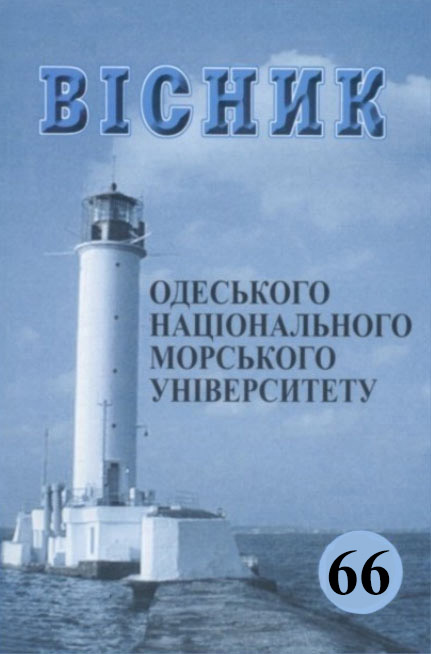Definition of port operators’ technical policy based on freight flows concentration estimation
Main Article Content
Abstract
This article attempts to substantiate the formation of the port operators’ technical policy by assessing the concentration of freight flows in Ukrainian Black Sea region ports. Based on the main cargo flows of crude oil, ferrous metals, grain and containerized cargo, both the concentration coefficient and the Herfindahl-Hirschman Index were calculated. Calculation results showed that the segment of the studied cargoes should be characterized as moderately concentrated in terms of the concentration coefficient for each seaport. Based on the Herfindahl-Hirschman Index, grain and container cargo flows were defined as highly concentrated. Port operators in determining their own technical policy can use the resulting concentration level. The paper presents an algorithm for making a managerial decisions based on the freight flows concentration assessment. In addition, seaport managers when comparing the freight flows segment as part of a comprehensive analysis of the port services market and the freight flows segment when analysing a particular seaport can use such an assessment.
Article Details
References
2. Sobkevych O. V., Shevchenko A. V.&Zhalila Ya. A. (Ed) at al.(2021) The real sector of Ukraine's economy in the face of systemic challenges. Kyiv, Retrieved from: https://niss.gov.ua/sites/default/files/2021-05/block_realsektor_sait-1.pdf [in Ukrainian]
3. Kruk Yu.Yu.(2015) Methods for adaptive forecasting of cargo flows.Visnyk Odeskoho natsionalnoho morskoho universytetu,1 (43), 174-189 [in Russian].
4. Makushev P.A. & KholodenkoA.M.(2004) Modeling the port loading process. Metody ta zasoby upravlinnia rozvytkom transportnykh system, 8, 189-206 [in Russian].
5. Mahamadov A.R. &Saveleva Y.V.(2011) On the problem of interpretation and quantification of the production capacity of cargo handling systems. Rozvytok metodiv upravlinnia ta hospodariuvannia na transporti, 36 (3), 5-17[in Russian]
6. Saveleva Y.V.(2010)Econometric forecasting models for container traffic through the ports of Ukraine.Rozvytok metodiv upravlinnia ta hospodariuvannia na transporti,32, 5-25 [in Russian].
7. Ducruet, C., & Itoh, H. (2016). Regions and material flows: investigating the regional branching and industry relatedness of port traffics in a global perspective. Journal of Economic Geography, 16(4), 805-830.
8. Lee, T., Yeo, G.T., & Thai, V.V. (2014). Changing concentration ratios and geographical patterns of bulk ports: the case of the Korean west coast. The Asian Journal of Shipping and Logistics, 30(2), 155-173.
9. Wang, L., Goodchild, A., & Wang, Y. (2018). The effect of distance on cargo flows: a case study of Chinese imports and their hinterland destinations. Maritime Economics & Logistics, 20(3), 456-475.
10. Jachimowski, R. (2017). Review of transport decision problems in the marine intermodal terminal. Archives of Transport, 44.
11. Strategy for the development of Ukrainian seaports for the period up to 2038 (2013). Retrieved from:https://zakon.rada.gov.ua/laws/show/548-2013-%D1%80#Text [in Ukrainian]
12. Official website of the Administration of seaports of Ukraine.
